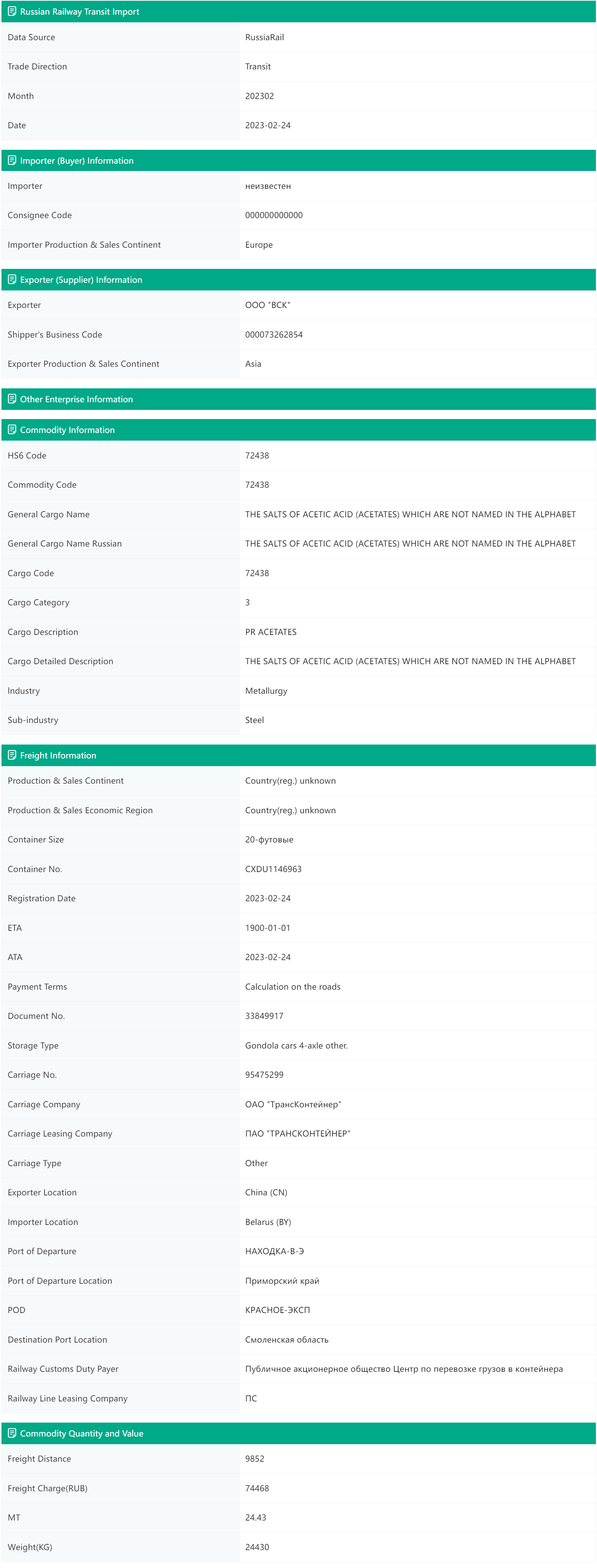Please Sign in to view recently saved searches.
Russian railway transit: Russia's cross-border railways are important transportation channels connecting Russia with neighboring countries and other regions in Europe and Asia. They play an important role in promoting regional trade, facilitating people-to-people exchanges, and promoting economic development. At present, there are a total of 11 international railway trunk lines in Russia connected with countries such as Finland, Lithuania, Ukraine, Belarus, Azerbaijan, Mongolia, China, and North Korea, including: the October Railway, the North Caucasus Railway, the Moscow Railway, the Volga River Basin Railway, the Trans-Siberian Railway, and the Baikal-Amur Mainline.
In the first quarter of 2024, the cross-border railway transportation of goods between China and Russia reached a historical high of 42.5 million tons. This not only shows the strong carrying capacity of the railway transportation systems of the two countries but also reflects the growing trade demand between the two countries.
[Latest news on Russian railway transit]
According to the development strategy of the Russian government, it is expected that in 2024 and 2025, investment plans for building two new railway lines to China by 2030 will be discussed. As of now, the two countries with a 4,208-kilometer common border only have four railway crossing points.
Of the two planned railways, the first is the high-speed railway in northern Siberia, which will run from Nizhnevartovsk to Belayar in Tomsk Oblast, and then from TashTagol in Kemerovo Oblast to Urumqi in China. The second line will pass through the Tuva Republic of Russia and cross the Russian border to enter Mongolia and then reach China. This railway also consists of two parts. One leads to the Taxkorgan port in China and then to Urumqi, and the other reaches the Erenhot port and then reaches Beijing.
The modernization of the eastern mountains of Russia includes increasing the throughput of the Baikal-Amur Mainline and the Trans-Siberian Railway (BAM and the Trans-Siberian Railway) by 1.5 times by 2024 to reach 180 million tons per year. As part of the second stage of the modernization of the eastern training ground, Russian Railways Open Joint Stock Company (RZD) plans to introduce 114 infrastructure items by the end of 2024. In the third stage, Russian Railways announced the need to build 316 facilities to ensure that the transportation capacity of the Baam Railway and the Trans-Siberian Railway reaches 255 million tons by 2032.
In 2024, the delivery time of transit containers along the eastern mountains of Russia will be shortened to 7 days; its transportation volume is planned to increase to nearly 1.7 million standard containers.
The Russian railway transit data of Blooming Trade Data includes buyer information, supplier information, commodity cargo information, freight transportation details, commodity quantity and price information, etc.
Would you like to leverage Russian railway import and export data to assess market demand, analyze competitors, and formulate trade strategies?

Sample Data


